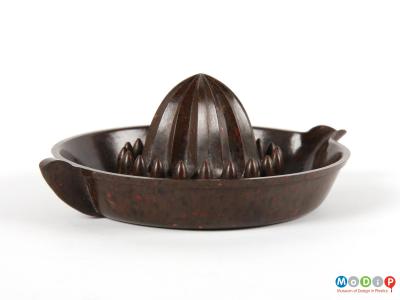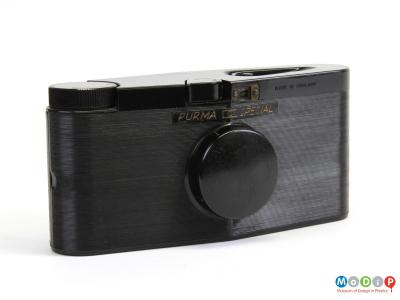(without filler)
(with filler)
Acronym and details: PF. With wood flour or other filler as powder or pre-formed tablets and as liquid resin. Often called cast phenolic
Group: thermoset
Developed: With filler 1907: not widely used until after 1915; still used for electrical moulds and saucepan handles. As liquid resin: 1927.
Trade names: With filler: Bakelite; Mouldrite; Nestorite; Roanoids. As liquid resin: Bakelite; Catalin; Carvacraft
Manufacturing process: with filler: compression moulding
Cost: medium
Colour: With filler: usually dark in colour: black, shades of green, red and brown, often mottled sometimes in wood effects. As liquid resin: any, but frequently amber and green, seldom blue
Transparency: With filler: always opaque. As resin: seldom transparent; often translucent and marbled; sometimes opaque
Rigidity: always rigid
Feel: hard
Smell: carbolic acid
Other: good electrical and heat resistance
Typical uses: With filler: domestic items: radio, clock and hair dryer casings, ash trays, boxes; electrical fittings; car components, aircraft and military components; cooker knobs; kettle handles. As liquid resin: napkin rings and bangles; desk accessories; wireless cabinets, especially American; jewellery; laminate surfacing, e.g. Formica™.
Degradation: With filler: relatively stable but colour darkened by exposure to light, green becoming brown, also goes dull. As liquid resin: brittle but relatively stable; discolours






